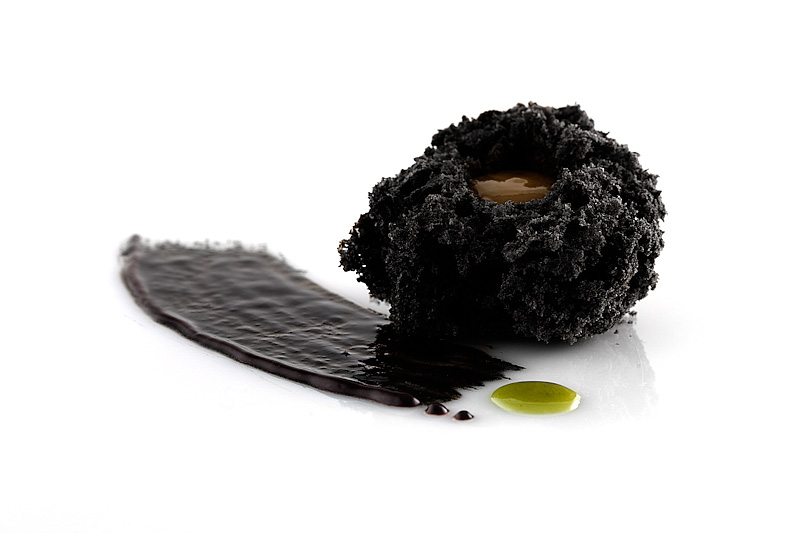
Friday night I was flipping through a friend’s copy of Natura, a collection of desserts from El Bulli by Ferran Adria’s brother, Albert. I came across a section detailing some of the techniques they used for the desserts, and one in particular caught my eye. El Bulli refers in several dishes to “cake-m” or “sponge-m”, which I thought was a funky translation at first, but they go on to elaborate that oftentimes they stumble across a technique that has no precedent, so they make a name up for it. The “M” in this case stands for “microwave”; the technique basically involves creation of a sponge cake batter that’s squirted from a cream whipper into a plastic cup before being microwaved.
To explain why this is interesting: in baking, when one wishes to create a fluffy pastry with cakelike consistency, there’s one vital ingredient needed — air. Most cake batters include eggs and some sort of leavening agent, be it yeast, baking powder, or baking soda. The leavening agents react with the rest of the ingredients to form bubbles: yeast eat sugars and release carbon dioxide, baking soda (sodium bicarbonate) reacts with acids in the batter to generate bubbles of CO2, and baking powder self-reacts in the presence of moisture (baking powder is a mixture of baking soda and some acid — usually tartaric acid). When this aerated mixture is heated, steam collects in the bubbles and causes the mixture to expand (‘rise’). This goes on until the temperature of the mixture reaches a point that causes the eggs to set, which firms the structure and yields a fluffy cake.
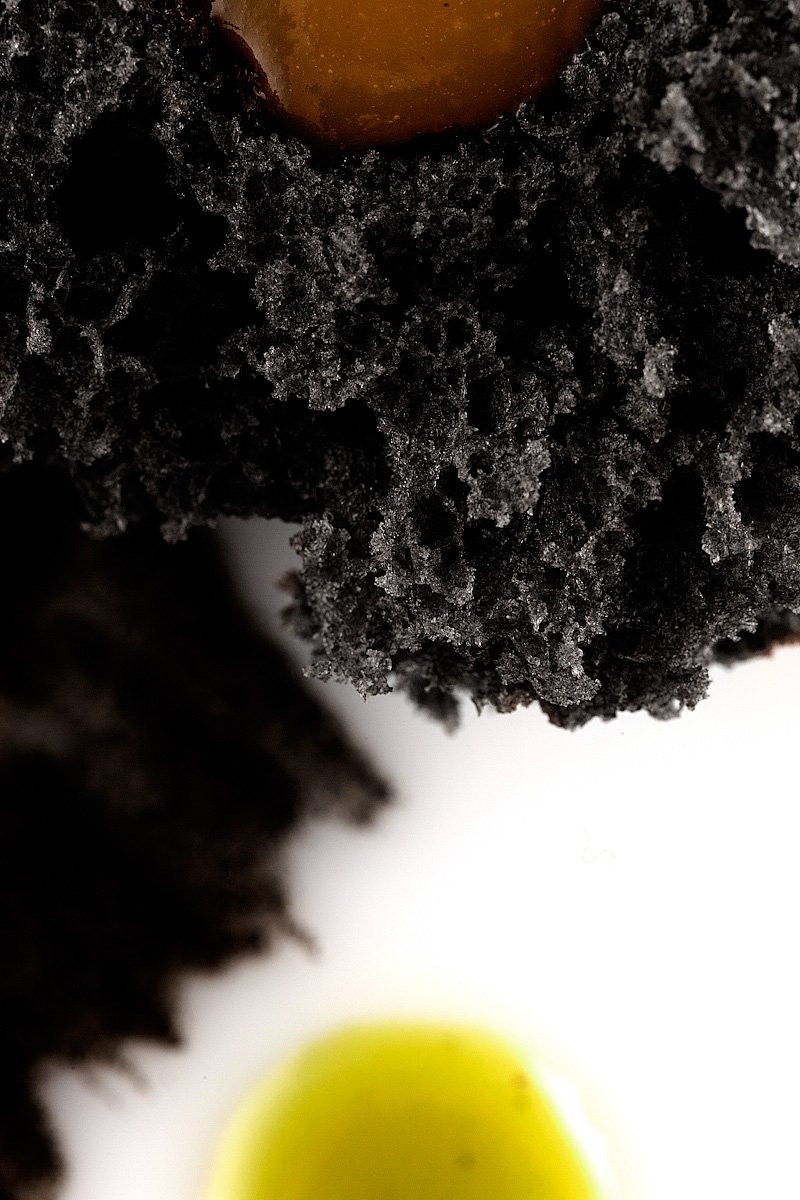
Knowing this, we can shortcut things a little: El Bulli uses a cream whipper rather than any leavening agents. Filling a cream whipper with batter and charging it with a couple of NO2 cartridges causes the mixture to be instantly aerated as it leaves the whipper. This is the exact same technique used in canned pancake batter: the pancake mixture is sprayed onto a hot iron griddle, and the relative thinness of the batter and heat of the iron causes the batter to rise and set relatively quickly, before the NO2 bubbles have a chance to dissipate.
Recognizing that we need to heat things pretty quickly using this technique, El Bulli turned to another fast source of heat: the microwave. The microwave is interesting as a heating source because — unlike traditional heating methods like ovens or stovetops, which rely on convection for heat to travel through the medium (often resulting in a thermal differential that causes some parts of the medium to be cooked more than others) — the microwave heats uniformly using high-frequency electric fields to excite water molecules throughout the cooking medium. El Bulli fills a disposable cup with aerated sponge cake batter, then microwaves it for a minute or so…the fast, uniform heating causes the cake to rise and set firmly without a high thermal gradient involved. The result is a sponge cake that’s evenly-cooked throughout, and which is extremely moist and fluffy. Pretty damn awesome.
This process seemed so easy and neat that I had to try it. Natura provides a recipe for Black Sesame cake-m, which I recognized as something served at Next during their El Bulli menu, so I figured I’d start there. I made some sesame paste from black sesame seeds and sesame oil, then combined this with eggs, flour and sugar in a blender and blended until smooth. Then I charged the mixture in a cream whipper with 2 NO2 cartridges, chilled it for a few hours, and sprayed a few spoonfuls into the bottom of a Glad disposable plastic container. 40 seconds in the microwave and out came a perfectly fluffy little individual sponge cake…super cool!
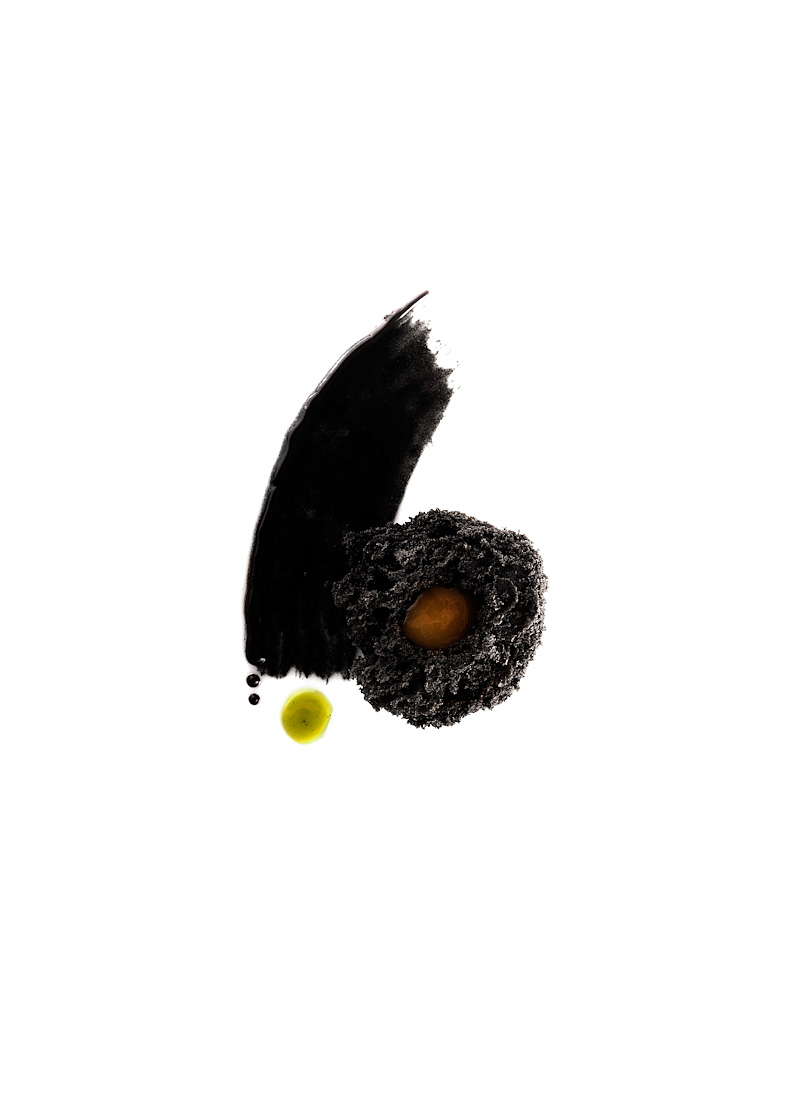
To try to round things out, I made a sweet miso mixture from fresh white miso, mirin, sugar, and some sake to top the cake. The first time through I used a tub of miso that’d been sitting in the back of our fridge for months. I’d always been under the assumption that miso doesn’t really go bad — not really — but I think miso does continue to age and ferment in the fridge, and left alone long enough it develops stronger and stronger flavors. As a result, it was tough to make this older miso taste light and sweet and desserty, so I tried again with a fresh batch from the grocery — this worked much better.
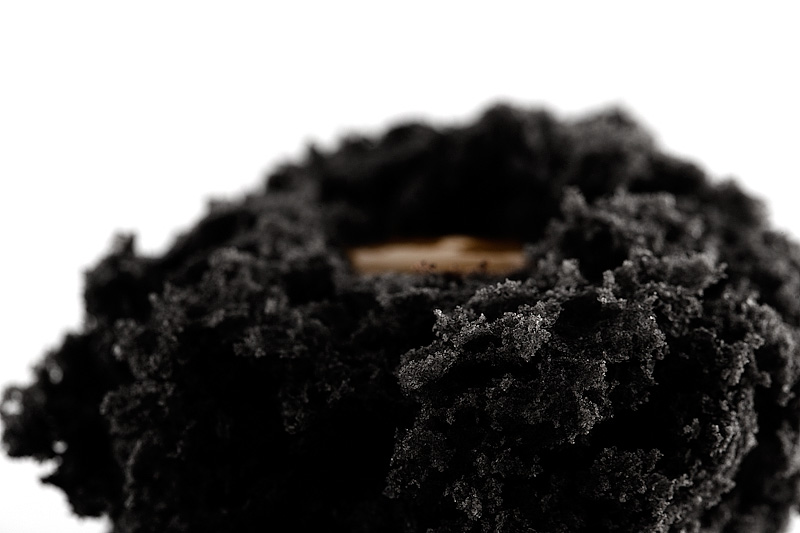
I also paired the miso-topped sponge with a smear of honey-sweetened black sesame paste, chocolate seasoned with rice vingar and mirin, and dots of green tea icing made with matcha powder. The vinegared chocolate sounds like it might be terrible but was actually kind of compelling and I was excited to have come up with it; I figured balsamic and chocolate make sense together, so why not swing it around to fit with the rest of these Asian flavors with rice vinegar? The 66% Tcho chocolate I was using balanced nicely with the tang of the vinegar; there was enough to brighten and sharpen it without it tasting overtly vinegary, and the mirin helped sweeten and balance it.
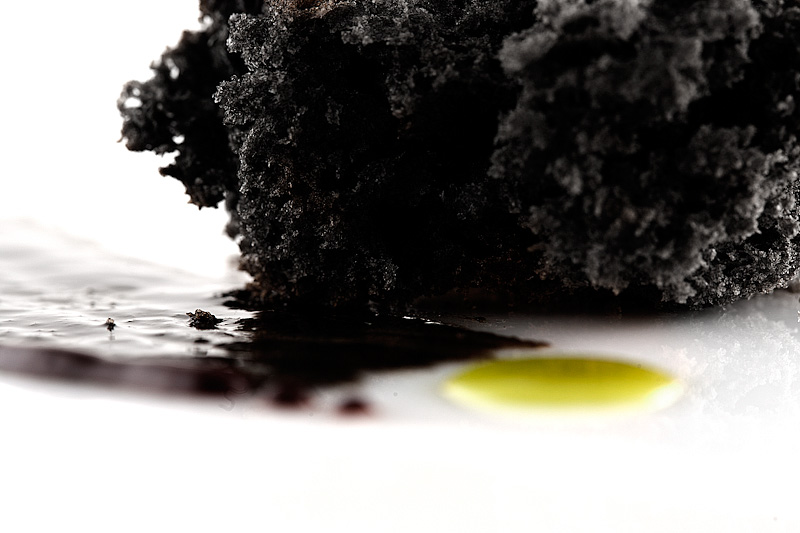
Microwave cake! One more reason to get a cream whipper (and a microwave)! The more that I think about this, the more that it sounds like dangerously instant gratification. (Or close to it, anyway, since you have to chill the cake batter.)
I’m not entirely sure just how important it is to chill the batter for a few hours before cooking it. I’ve used this technique in the past with a ‘brioche’ bread and was able to disperse it instantly after making the batter.
In any case, very cool and versatile technique and absolutely stunning photos as always!
I’ve made these cakes both with chilled and un-chilled batter, and didn’t notice much difference.
More importantly, can we focus on the fact that you have friends that just have copies of Natura lying around!? How cool is that?